Abstract
Incubation of a 0.5% suspension of washed, normal mouse erythrocytes with ferriprotoporphyrin IX (FP) at 37 degrees C and pH 7.4 caused potassium loss, swelling, increased susceptibility to hypotonic lysis, and finally hemolysis. Hemolysis was not inhibited by incubation in the dark, malonyldialdehyde was not produced, and various free radical scavengers had no effect on the hemolysis. Only the sulfhydryl compounds, cysteine, dithiothreitol, and mercaptoethanol protected erythrocytes from FP. Potassium loss reached 90% within 30 min of exposure to 5 microM FP. This amount of FP caused greater than 50% hemolysis within 2.5 h. Sucrose (0.1 M) completely prevented hemolysis but had no effect on potassium loss. Likewise, reducing the temperature from 37 to 25 degrees C greatly retarded hemolysis but had no effect on potassium loss. These observations indicate that FP impairs the erythrocyte's ability to maintain cation gradients and induces hemolysis by a colloid-osmotic mechanism.
Full text
PDF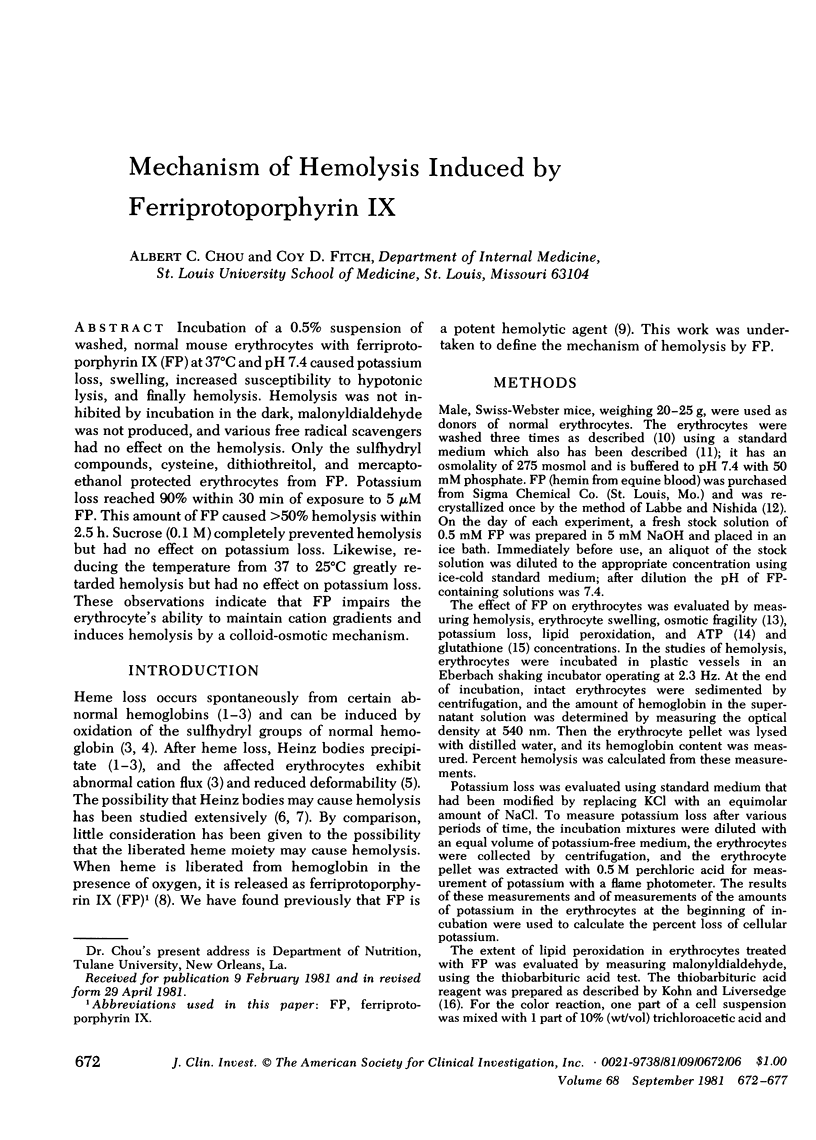
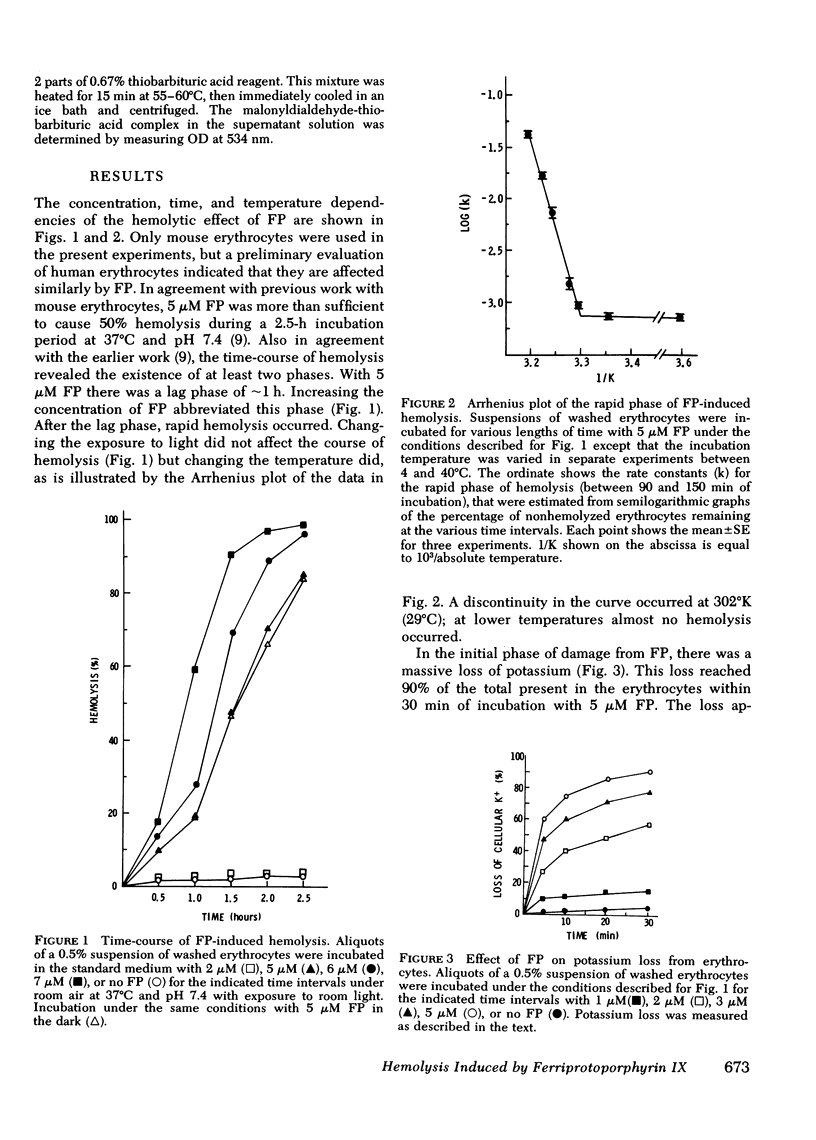
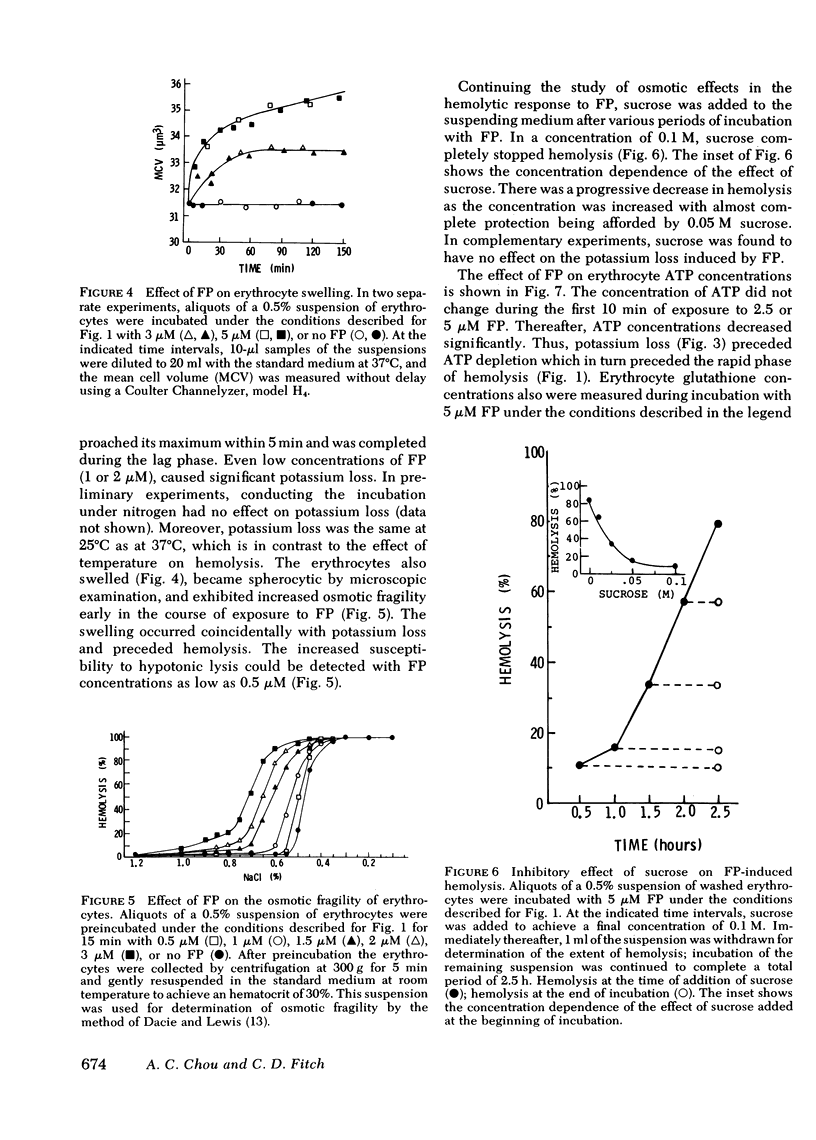
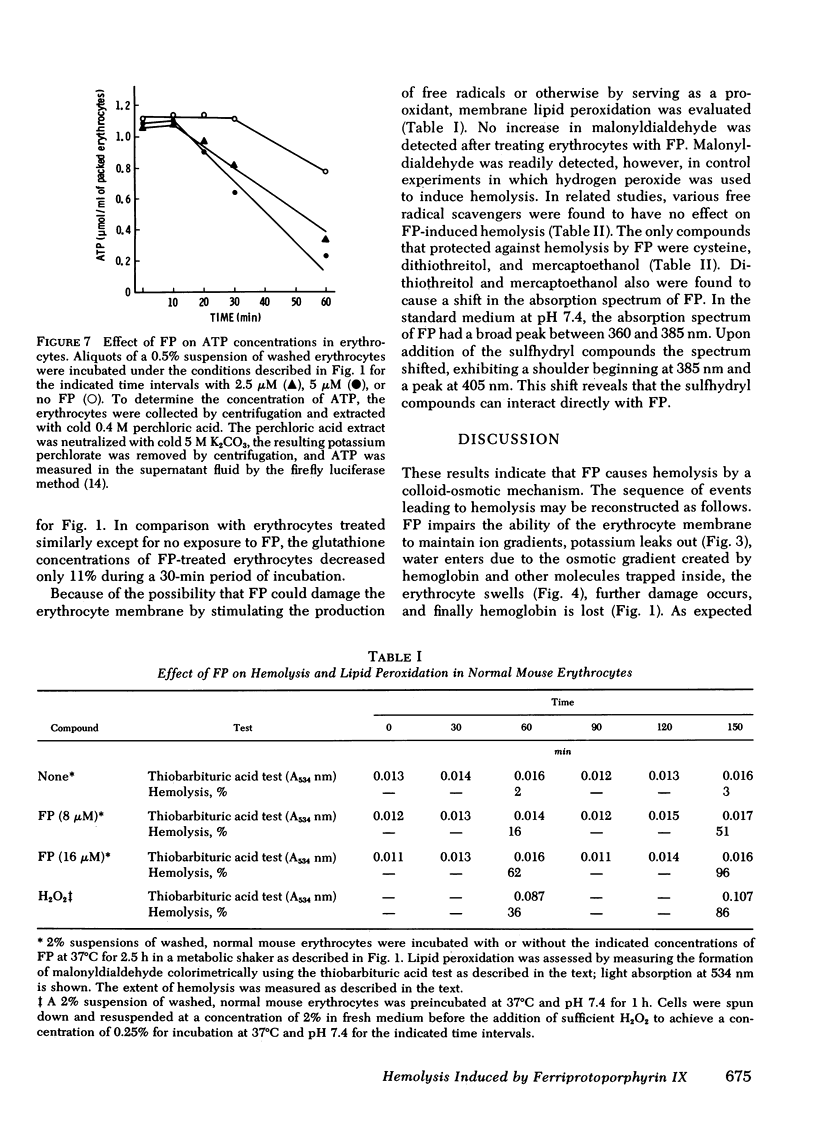
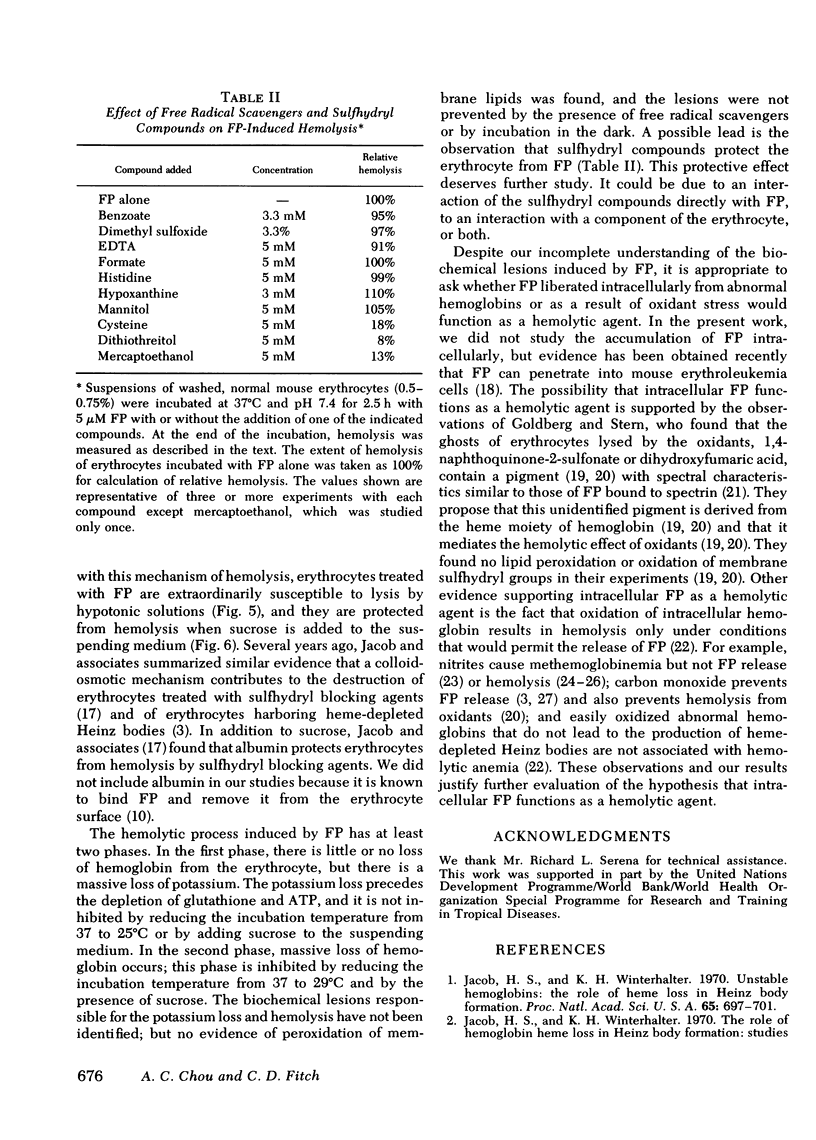
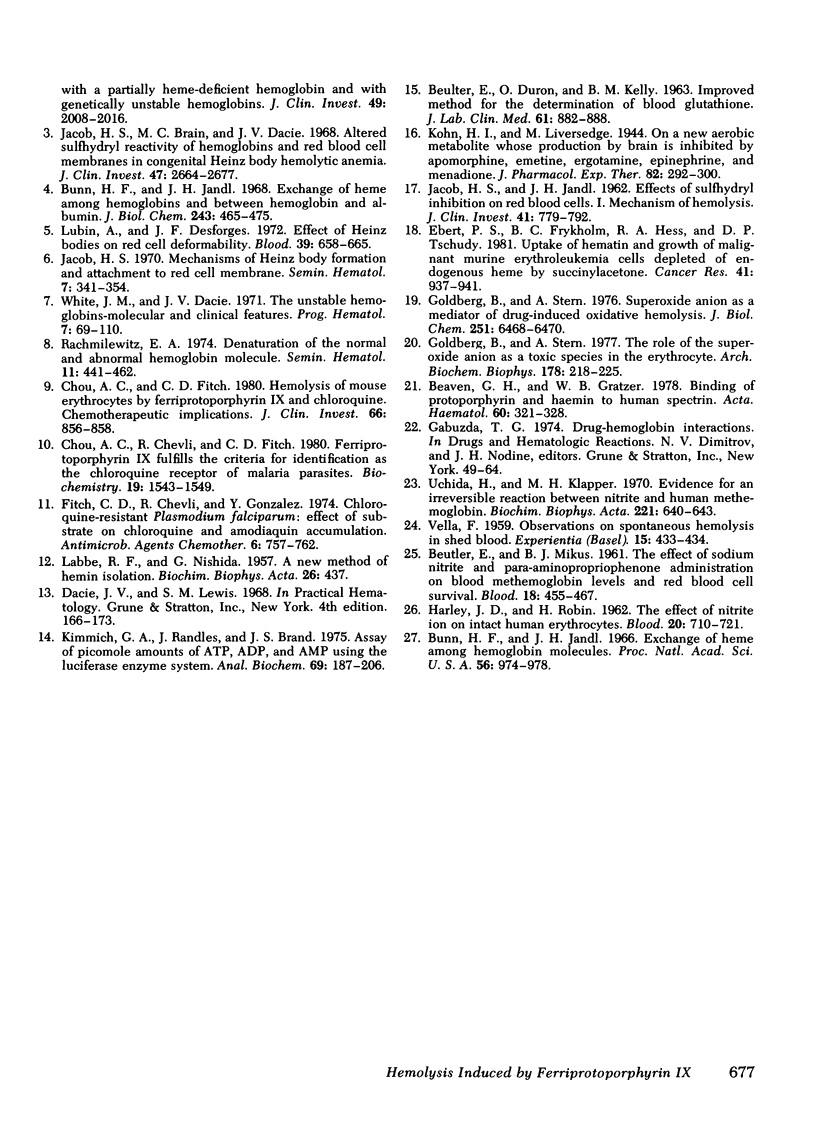
Selected References
These references are in PubMed. This may not be the complete list of references from this article.
- BEUTLER E., DURON O., KELLY B. M. Improved method for the determination of blood glutathione. J Lab Clin Med. 1963 May;61:882–888. [PubMed] [Google Scholar]
- BEUTLER E., MIKUS B. J. The effect of sodium nitrite and para-aminopropriophenone administration on blood methemoglobin levels and red blood cell survival. Blood. 1961 Oct;18:455–467. [PubMed] [Google Scholar]
- Beaven G. H., Gratzer W. B. Binding of protoporphyrin and haemin to human spectrin. Acta Haematol. 1978;60(6):321–328. doi: 10.1159/000207731. [DOI] [PubMed] [Google Scholar]
- Bunn H. F., Jandl J. H. Exchange of heme among hemoglobin molecules. Proc Natl Acad Sci U S A. 1966 Sep;56(3):974–978. doi: 10.1073/pnas.56.3.974. [DOI] [PMC free article] [PubMed] [Google Scholar]
- Bunn H. F., Jandl J. H. Exchange of heme among hemoglobins and between hemoglobin and albumin. J Biol Chem. 1968 Feb 10;243(3):465–475. [PubMed] [Google Scholar]
- Chou A. C., Chevli R., Fitch C. D. Ferriprotoporphyrin IX fulfills the criteria for identification as the chloroquine receptor of malaria parasites. Biochemistry. 1980 Apr 15;19(8):1543–1549. doi: 10.1021/bi00549a600. [DOI] [PubMed] [Google Scholar]
- Chou A. C., Fitch C. D. Hemolysis of mouse erythrocytes by ferriprotoporphyrin IX and chloroquine. Chemotherapeutic implications. J Clin Invest. 1980 Oct;66(4):856–858. doi: 10.1172/JCI109925. [DOI] [PMC free article] [PubMed] [Google Scholar]
- Ebert P. S., Frykholm B. C., Hess R. A., Tschudy D. P. Uptake of hematin and growth of malignant murine erythroleukemia cells depleted of endogenous heme by succinylacetone. Cancer Res. 1981 Mar;41(3):937–941. [PubMed] [Google Scholar]
- Fitch C. D., Chevli R., Gonzalez Y. Chloroquine-resistant Plasmodium falciparum: effect of substrate on chloroquine and amodiaquin accumulation. Antimicrob Agents Chemother. 1974 Dec;6(6):757–762. doi: 10.1128/aac.6.6.757. [DOI] [PMC free article] [PubMed] [Google Scholar]
- Goldberg B., Stern A. Superoxide anion as a mediator of drug-induced oxidative hemolysis. J Biol Chem. 1976 Oct 25;251(20):6468–6470. [PubMed] [Google Scholar]
- Goldberg B., Stern A. The role of the superoxide anion as a toxic species in the erythrocyte. Arch Biochem Biophys. 1977 Jan 15;178(1):218–225. doi: 10.1016/0003-9861(77)90187-4. [DOI] [PubMed] [Google Scholar]
- HARLEY J. D., ROBIN H. The effect of the nitrite ion on intact human erythrocytes. Blood. 1962 Dec;20:710–721. [PubMed] [Google Scholar]
- JACOB H. S., JANDL J. H. Effects of sulfhydryl inhibition on red blood cells. I. Mechanism of hemolysis. J Clin Invest. 1962 Apr;41:779–792. doi: 10.1172/JCI104536. [DOI] [PMC free article] [PubMed] [Google Scholar]
- Jacob H. S., Brain M. C., Dacie J. V. Altered sulfhydryl reactivity of hemoglobins and red blood cell membranes in congenital Heinz body hemolytic anemia. J Clin Invest. 1968 Dec;47(12):2664–2677. doi: 10.1172/JCI105950. [DOI] [PMC free article] [PubMed] [Google Scholar]
- Jacob H. S. Mechanisms of Heinz body formation and attachment to red cell membrane. Semin Hematol. 1970 Jul;7(3):341–354. [PubMed] [Google Scholar]
- Jacob H. S., Winterhalter K. H. The role of hemoglobin heme loss in Heinz body formation: studies with a partially heme-deficient hemoglobin and with genetically unstable hemoglobins. J Clin Invest. 1970 Nov;49(11):2008–2016. doi: 10.1172/JCI106421. [DOI] [PMC free article] [PubMed] [Google Scholar]
- Jacob H., Winterhalter K. Unstable hemoglobins: the role of heme loss in Heinz body formation. Proc Natl Acad Sci U S A. 1970 Mar;65(3):697–701. doi: 10.1073/pnas.65.3.697. [DOI] [PMC free article] [PubMed] [Google Scholar]
- Kimmich G. A., Randles J., Brand J. S. Assay of picomole amounts of ATP, ADP, and AMP using the luciferase enzyme system. Anal Biochem. 1975 Nov;69(1):187–206. doi: 10.1016/0003-2697(75)90580-1. [DOI] [PubMed] [Google Scholar]
- LABBE R. F., NISHIDA G. A new method of hemin isolation. Biochim Biophys Acta. 1957 Nov;26(2):437–437. doi: 10.1016/0006-3002(57)90033-1. [DOI] [PubMed] [Google Scholar]
- Lubin A., Desforges J. F. Effect of Heinz bodies on red cell deformability. Blood. 1972 May;39(5):658–665. [PubMed] [Google Scholar]
- Rachmilewitz E. A. Denaturation of the normal and abnormal hemoglobin molecule. Semin Hematol. 1974 Oct;11(4):441–462. [PubMed] [Google Scholar]
- Uchida H., Klapper M. H. Evidence for an irreversible reaction between nitrite and human methemoglobin. Biochim Biophys Acta. 1970 Dec 22;221(3):640–643. doi: 10.1016/0005-2795(70)90236-9. [DOI] [PubMed] [Google Scholar]
- VELLA F. Observations on spontaneous hemolysis in shed blood. Experientia. 1959 Nov 15;15:433–434. doi: 10.1007/BF02157699. [DOI] [PubMed] [Google Scholar]
- White J. M., Dacie J. V. The unstable hemoglobins--molecular and clinical features. Prog Hematol. 1971;7(0):69–109. [PubMed] [Google Scholar]


